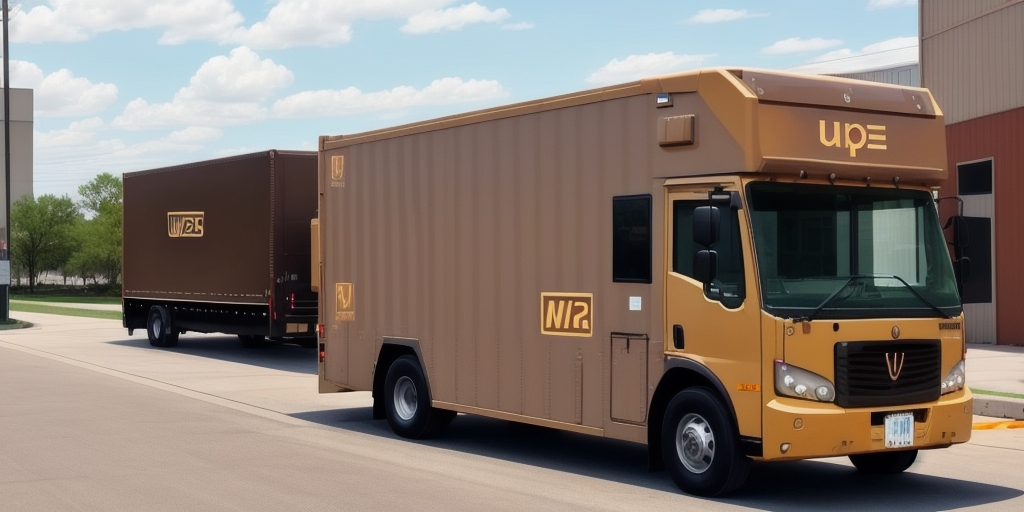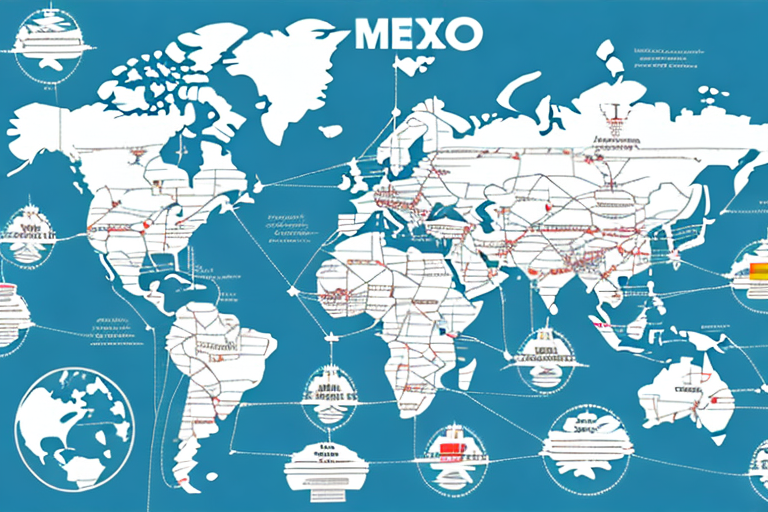Understanding Average Ecommerce Shipping Costs
In ecommerce, shipping costs can significantly impact both the customer experience and the bottom line. However, determining the average cost of shipping and understanding the factors that contribute to it is not always clear-cut. In this article, we will explore the various factors that affect ecommerce shipping costs, examine different strategies for reducing them, and provide guidance on how to calculate and communicate these costs to customers.
Factors that Determine Ecommerce Shipping Costs
Several factors contribute to ecommerce shipping costs. Understanding these factors is essential for businesses to assess and optimize their shipping expenses.
Shipping Distance
The distance between the origin and destination of a package directly affects its shipping cost. Generally, the farther the package is shipped, the higher the shipping cost will be. This is because longer distances require more fuel and time for carriers to deliver the package. According to the United States Postal Service (USPS), shipping costs increase with the zone distance of the shipment.
Package Weight
Package weight is a significant factor in shipping costs. The heavier the package, the more it will cost to ship. Carriers charge based on the weight of the package, and larger, heavier packages require more resources to transport. For example, FedEx outlines that shipping rates increase progressively with weight brackets.
Package Dimensions
Package dimensions also impact shipping costs. Large, oversized packages require additional handling and may necessitate specialized equipment, leading to higher shipping expenses. Dimensional weight pricing, used by many carriers, calculates shipping costs based on both size and weight. More information can be found on carriers' official websites such as UPS.
Carrier and Shipping Method
The choice of shipping carrier and method can significantly affect shipping costs. Different carriers and shipping methods have varying pricing structures and service levels. For example, expedited shipping options like overnight delivery cost more than standard shipping due to faster delivery times.
Packaging Materials
The type of packaging materials used influences ecommerce shipping costs. Fragile or delicate items may require additional padding or protective materials, increasing the weight and size of the package and thereby the shipping costs. Conversely, using lightweight and durable packaging materials can help reduce shipping expenses. Businesses should balance product protection with cost-effectiveness when selecting packaging materials.
Strategies for Reducing Ecommerce Shipping Costs
Now that we understand the various factors that contribute to ecommerce shipping costs, let's explore some strategies for reducing them.
Flat Rate vs. Real-Time Shipping Costs
Flat-rate shipping charges a set fee regardless of package weight or distance, offering simplicity and predictability for both businesses and customers. However, it may not always be cost-effective. Real-time shipping calculates costs based on package weight, distance, and other factors, providing more accurate shipping costs and potential savings in the long run. Businesses can analyze their shipping patterns to determine which method aligns best with their operational needs.
Understanding Shipping Fees
It's crucial for businesses to understand the different types of fees associated with ecommerce shipping, such as fuel surcharges, residential delivery fees, and dimensional weight pricing. Navigating these fees effectively can lead to significant cost savings. Consulting detailed carrier rate charts and utilizing rate calculators can aid in this process.
Calculating Accurate Shipping Costs
Accurately calculating shipping costs is critical to avoid unexpected expenses or undercharging, which can impact customer satisfaction. Businesses should consider package details, carrier pricing structures, additional fees, and use shipping calculators provided by carriers like USPS, FedEx, and UPS to determine precise shipping costs.
Using Third-Party Shipping Services
Leveraging third-party shipping services can help reduce ecommerce shipping costs. These services often negotiate better rates with carriers due to volume discounts and provide access to advanced shipping technologies, such as automated label generation and package tracking, which can save time and reduce errors. Examples include ShipBob and EasyShip.
Best Practices for Communicating Ecommerce Shipping Costs to Customers
Effectively communicating shipping costs to customers is essential for managing expectations and preventing dissatisfaction. Here are some best practices:
Transparent Pricing
Provide clear and upfront information about shipping costs during the checkout process. Avoid hidden fees that can lead to cart abandonment and erode trust.
Offer Multiple Shipping Options
Provide customers with a range of shipping options, such as standard, expedited, and free shipping thresholds. This allows customers to choose the option that best fits their needs and budget.
Incorporate Shipping Costs into Pricing Strategy
Consider including shipping costs into product pricing or offering free shipping as a promotional strategy. While this can enhance customer satisfaction, ensure it aligns with your overall business model to maintain profitability.
Conclusion
Ecommerce shipping costs are a critical component of business operations that can significantly influence customer satisfaction and overall profitability. By understanding the various factors that contribute to these costs, implementing effective strategies to reduce them, accurately calculating shipping expenses, and transparently communicating them to customers, businesses can better manage their shipping operations and enhance their competitive edge.
Case Studies: Analyzing Real-World Examples of Successful Management of Ecommerce Shipping Costs
Examining real-world examples can provide valuable insights into effective ecommerce shipping cost management. Below are two notable case studies:
Zappos
Zappos offers free shipping on all orders, regardless of purchase amount, enhancing customer satisfaction and loyalty. They manage to keep shipping costs low by negotiating discounted rates with carriers and optimizing their packaging to reduce weight and size. Their strategic partnerships and efficient logistics contribute to their ability to offer free shipping sustainably.
Amazon
Amazon provides free shipping to its Prime members, leveraging its vast logistics network to manage shipping costs effectively. By investing in its own fulfillment centers, transportation fleet, and utilizing data analytics to optimize shipping routes and delivery times, Amazon achieves economies of scale that allow it to offer competitive shipping options while maintaining profitability.








